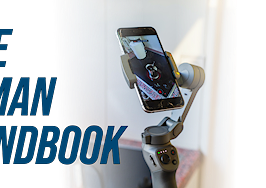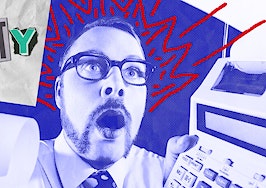The practice of using an open house to market properties has been around for more than 100 years. Although they’ve changed a lot during in the last century, the general procedure during open houses has largely remained the same. Or, at least it had, until the COVID-19 pandemic threw all norms out the window.
Most open houses were put on pause at the start of the pandemic due to public health concerns, and some agents still haven’t started them up again. Even before the public health crisis, some started to question the benefits of open houses versus their potential risks, with the ability for basically anyone to come and go unvetted. Just in June of 2020, one Keller Williams real estate agent in Huddleston, Virginia, was brutally attacked at an open house, suffering skull fractures and other head injuries.
Given these potential risks, how can agents most safely approach hosting an open house? Keep the following steps in mind.
Table of Contents
Advance prep for open houses
As you and your seller start to discuss hosting an open house, be sure to first check all current state and local COVID-19 mandates, both with your Realtors’ association and local governments, regarding permissible activities and relevant guidelines on maximum number of persons in one space, etc., to determine if an open house is possible now in your area.
Most areas are allowing open houses to be held, but there may be some restrictions.
In some states like New York and Washington, for instance, agents need to limit the number of individuals coming into a property at the same time (Washington suggests 10 people max, New York is more vague in its guidance), stagger showings, and generally avoid congregations.
In California, open houses are still banned, all home showings require an appointment, and anyone who enters the property (including, seller, buyer and agents) must complete a Property Entry Advisory and Declaration (PEAD) form. Other places like North Carolina, however, currently only recommend that gatherings indoors be limited to 50 people while wearing face coverings.
Many of the major brokerages have also issued safe open house guidelines to agents, which are often a compilation of recommendations from the Centers for Disease Control and Prevention (CDC), the National Association of Realtors (NAR), and/or state governments, as well as brokerage-specific recommendations. Basically all top brokerages are also continuing to remind agents of virtual open house solutions offered through partners, and providing with agents resources on how to effectively conduct those for clients, so be sure to review all of these sources from your brokerage.
Also stay up to date on what iBuyers are offering now in terms of tours, in case you have clients who go this route. Opendoor, for instance, is continuing to offer self-tours of vacant homes, and ensures that only one buyer visits a property at a time. Likewise, Offerpad still allows for self-tours of vacant homes as well, ensuring homes are sanitized and that showings are limited to one person at a time. Both iBuyers also have virtual viewing options available, too.
Once up to date on all recommendations and restrictions in your region, have a detailed discussion with your sellers about what they’re comfortable with — maybe they prefer their bedroom be sequestered off, or that there be a cap on total number of visitors. Take the time to tell them all precautions you plan to take and ask about their specific requests.
One tactic many agents have found useful to minimize contact within the home during this time is to arrive to the property early to turn on all lights and open all doors, cabinets, window coverings and related items.

Greg Steward | RE/MAX Precision
“We go in, turn all the lights on, all the doors open, so no one’s really touching anything and then we wear masks. We’ve actually had a few people come in and say they’re vaccinated, so we just kind of feel how the clients coming into it are,” Greg Steward, team leader of the Greg Steward Team at RE/MAX Precision near Des Moines, told Inman.
The CDC has also said that ample ventilation can help break up concentrated particles of COVID-19 and thereby decrease a person’s risk of contracting the virus. So, try to increase air flow within the property in advance by opening windows and screen doors and turning on ceiling fans.
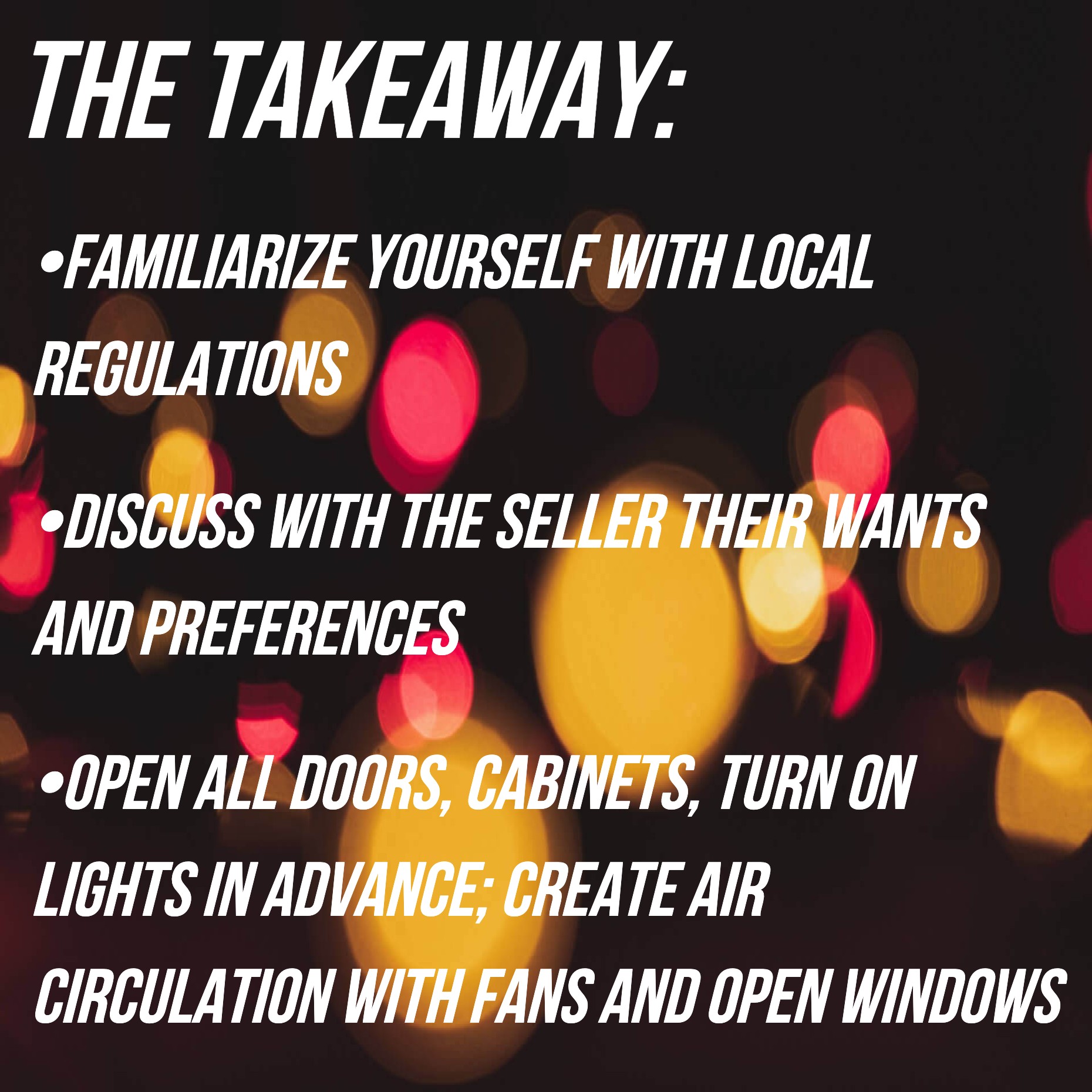
Additional resources:
- A brief history of the open house
- As states reopen, some luxury agents are returning to open houses
- Inman’s state-by-state guide to reopening the economy
- The post-coronavirus office: more air purifiers, less open floor plans
Gather supplies and set expectations
In all of your marketing communication for open houses, it’s important to be clear about how things will go. A lot will depend on restrictions or guidelines specific to your region, but let people know if there will be a limit on the number of people in the house at a time; if you expect them to wear face coverings, gloves and/or booties; how waiting and lines will be arranged; etc.

Tiffany Hahne | Savvy + Co Real Estate
Tiffany Hahne, an agent at Savvy + Co. in Charlotte, told Inman that her brokerage also puts an explanatory sign outside of homes during open houses stating that the number of entrants will be limited, so that people know what to expect.
“It just basically says, ‘Welcome to our open houses. Per the CDC guidelines, we’re limiting the number of individuals.’ We used to have a number on there — we don’t have a number on there anymore because it’s constantly changing.”
Hand sanitizer has become a staple for most people today, but be sure to have some available in different, accessible areas of the house you’re showing. “I look to put it in the very front of the home when you enter, if there’s a place to do it, and then I like to have another one in the area where there’s brochures and sign-in sheets and that sort of thing,” Hahne said.
Hahne brings a big plastic baggie of pens for people to use to sign in to the open house on a sign-in sheet. Then, she brings an empty baggie for dirty pens and labels it, so no one is using the same pen.
It’s also a good idea to be armed with extra face masks that you can place near the entrance of the home, especially in the case of passersby who just want to pop in but didn’t bring a mask on their walk. Depending on your seller’s wishes, you might also opt to bring a box of gloves and foot coverings to the property for visitors to wear inside.
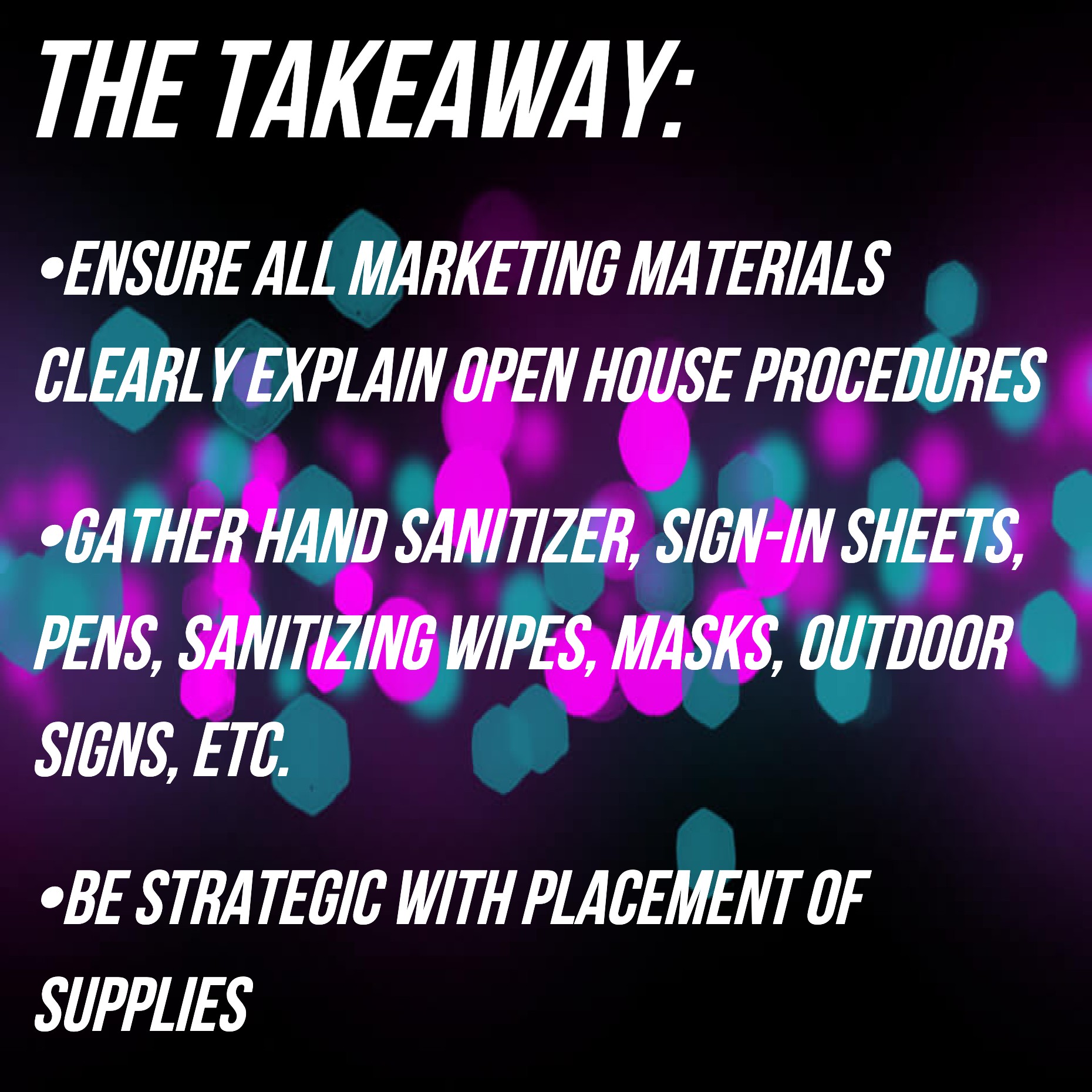
Additional resources:
- New status symbol for brokerages? A well-stocked supply of PPE
- The Inman Handbook on how to reopen your business this summer
- 5 open house sign mistakes that will cost you foot traffic
Best practices during open houses
Agents need to be ready to hit the ground running when hosting open houses during this hot market. Having a partner to help co-host will help keep crowds in check and ensure that everyone is following the proper safety protocols.
But, COVID-19 issues aside, having another member of your team help you is smart in terms of any crime or other safety concerns that sometimes come with hosting open houses. Choose caution, and remember there’s safety in numbers.
A few agents Inman spoke with mentioned that they like to keep one person at or outside of the entrance to the property to direct traffic flow. Others said they’ve been locking the front door to the home and letting people in as space is available.

Jason Soto | Spyglass Realty
“[My assistant is] slowing down the flow of people going in and out. They make sure they’re not all over each other,” Jason Soto, a broker at Spyglass Realty in Austin, told Inman. (Texas Governor Greg Abbott recently lifted the state’s mask mandate. Private businesses may still require patrons to wear masks, however.) “[We’re] kind of staging everybody outside and letting them in at a controlled pace.”
As guests enter the property, per recommendations from NAR, have them record their names on a sign-in sheet and their contact information to enable contact tracing in the event that you later learn that someone who was positive for COVID-19 visited the property.
It’s also a good idea to ask people how they’re feeling as they approach the house, and if they’re exhibiting any symptoms of COVID-19. It is completely acceptable to ask people to leave if they appear visibly ill, for everyone’s safety.
Unless you require visitors to wear gloves inside the property, it’s best to ask them to not touch anything. Bring a pair of gloves for yourself, if nothing else, so that you can turn on faucets or other similar items if someone wants to see how well the plumbing functions.
If traffic really starts mounting as it has for some of Hahne’s open houses recently (sometimes up to about 70 people within two hours), she also likes to greet parties as they come onto the property, explain to them how long they may have to wait to get inside, and encourage them to explore the backyard or other areas of the property outside of the home while they wait to be let inside.
Agents should also be prepared to question parties of more than two that show up to an open house. At this point, it’s still safest for everyone if no more than the necessary number of people come into contact with one another indoors.
NAR recommends agents limit the number of people in an open house at one time to 10 persons, per CDC recommendations. However, NAR also suggests agents consider conducting showings by appointment instead of holding open houses.
“When I’m out with clients showing them homes, I encourage them to leave all non-decision makers at home,” Holly Connaker, an agent with the Steadman Team at Coldwell Banker, told Inman. “If you’re not a decision maker, you really should not be going into a property and looking at it.”

Additional resources:
- Homesnap update promotes live open houses
- Should real estate agents disclose if their clients have COVID-19?
- Could your brokerage require you to get vaccinated? It’s complicated
What to clean and how often
The CDC recently updated its guidelines for how frequently and thoroughly surfaces need to be disinfected, given what the agency has learned about the virus and its transmission over the last year.
Under the new guidelines, the CDC says that merely cleaning surface areas, rather than disinfecting them (this involves using stronger cleaning agents that typically must sit on a surface for a specified amount of time, or using Clorox or Lysol wipes), will be sufficient to help prevent spread of the virus in most cases.
Generally, the CDC says that the risk of individuals contracting the virus from touching a surface is low. Therefore, if individuals regularly wash their hands with soap and water, or use hand sanitizer, and use masks in a shared space, they can greatly reduce their risk of infection.
The exceptions to this are if a sick individual has been in a space within the last 24 hours, if there are high transmission rates of COVID-19 within your community, people not wearing masks have been in the space within 24 hours, and individuals who have poor or infrequent hand hygiene have been in the space within 24 hours.
Assessing these risk factors in your specific situation can, therefore, help determine how much cleaning or disinfecting needs to be done before or after an open house.
If your sellers have only been out of the house for a few hours before your open house is about to start, you should probably do a quick wipe down of any high-touch surfaces (door knobs, light switches, counters, handles, stair rails, faucets, sinks, etc.) with a Clorox or similar wipe just to be extra cautious in case visitors touch anything.
When the open house has ended, cleaning any and all high-touch surfaces with a sanitizing wipe again is a nice courtesy to the seller, and recommended by NAR. The CDC notes that cleaning high-touch surfaces once a day should be sufficient to remove virus that may be on surfaces.
However, if there’s reason to believe that children or “others who may not consistently wear masks, wash hands, or cover coughs and sneezes” have been circulating in the space during the open house, you should disinfect those high-touch surfaces afterwards, according to CDC guidance.
Reference the Environmental Protection Agency’s (EPA) List N, which details different products that serve as disinfectants for COVID-19. (Remember to read all product instructions, as some need to sit on a surface area for several minutes in order to fully disinfect an area.)
Also, don’t forget to give the key and lockbox a wipe with a sanitizing product as you leave the house.
Of course, for a busy agent who anticipates a lot of traffic at these events and has the budget for it, it may be worth it to hire a cleaning service to come through a home after an open house and be sure to tackle all those high-contact areas. It could potentially save you time, and may give the seller some extra peace of mind.
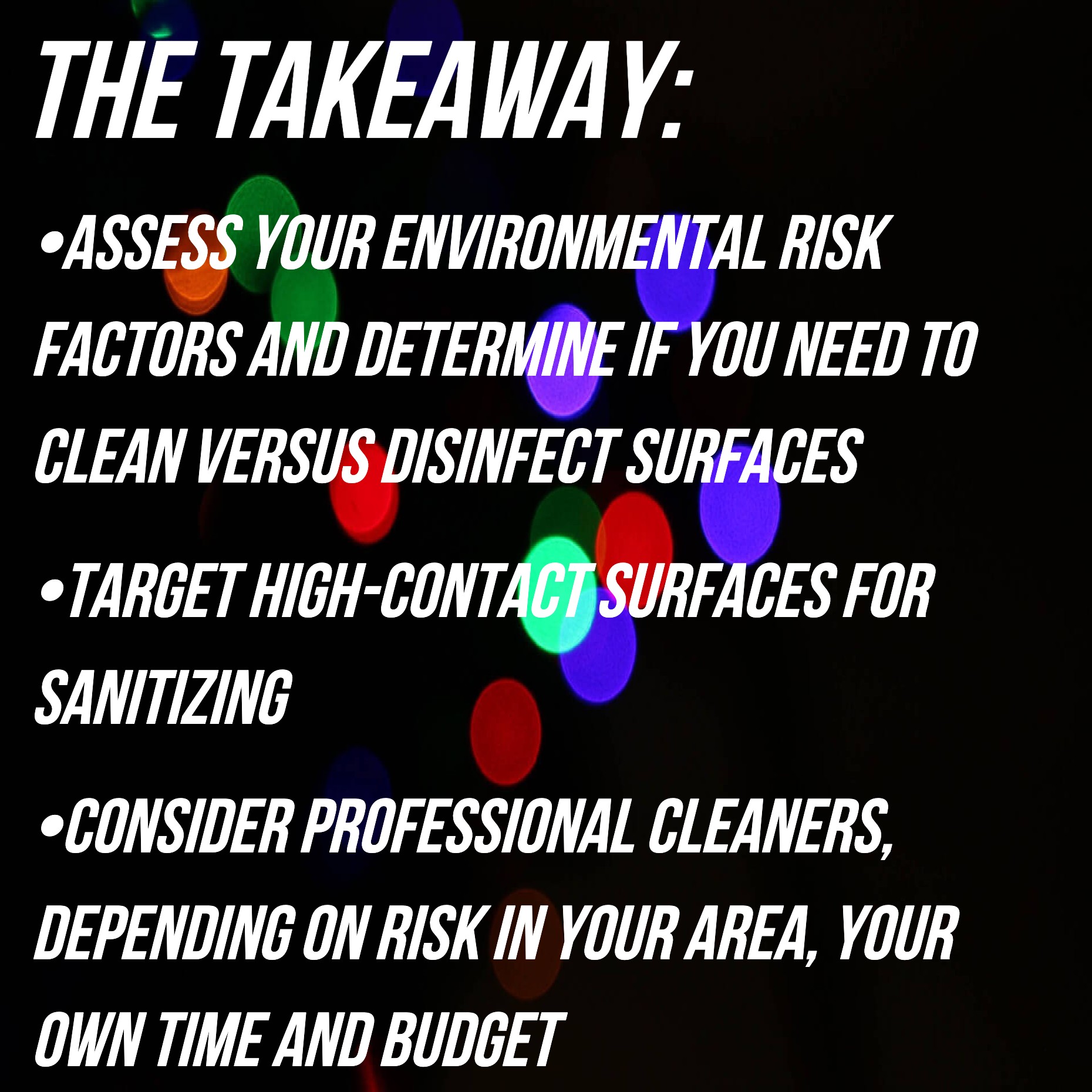
Additional resources:
- What investors need to know about predictive cleaning amid COVID
- How to properly clean and disinfect your real estate office
- ‘Sanitizer and power of attorney’: How luxury is bracing for the virus
Be aware of the risks in your area
A lot of the guidance outlined in this handbook thus far has been contingent upon the circumstances in any one agent’s specific location. More than one year after COVID-19 was declared a pandemic, the situation continues to vary widely from state to state, and sometimes even city to city. And things could continue to change swiftly in upcoming months.
So, it’s as important now as ever that agents stay up to date on local government and Realtors association guidance and regulations. Additionally, stay abreast of what COVID-19 case rates are in your city and state — as well as the presence of COVID-19 variants, which vaccines have varying effectiveness on — so that you can better assess how risky an open house is in your area.
On the crime and safety side of things, stay on top of local news and updates from your Realtors association so that you’re aware if there’s an incident at an open house in your market. Stay connected with other agents in your area as well so that you can be on guard if there are any strange happenings in the neighborhood.

Additional resources:
- Read all of Inman’s state-by-state market snapshots here
- Inman’s state-by-state guide to evictions, rent and foreclosures
- Out-of-state buyers? 5 tips for helping them in a hot seller’s market
Make the seller’s experience a good one
The emphasis on this year’s market so far has been how tough buyers have it, duking it out among other buyers, scrambling just to get a sliver of the pie. But don’t forget that this time is stressful for sellers, too.
Continue to reassure sellers and take all the precautions they ask for. It can still feel like a big step for some people to spend an extended amount of time outside of their home right now. Connaker takes time to have those discussions with her sellers and tries to set them up for a positive experience that will hopefully have a rewarding outcome.

Holly Connaker | Coldwell Banker
“A lot of times what I’m suggesting is that we have an open house on the weekend and that they head out of town for the weekend so they’re not in the house. That way it allows us to do the open houses, do the showings [and] they don’t have to be in and out of the house worrying about that,” she said. “We’re typically getting multiple offers before the end of the weekend, and then they can come home and life is kind of back to normal.”
At this point into the pandemic, sellers’ comfort level with holding open houses can run the gamut, so just continue to have those conversations with them and meet them wherever they’re at.
“I think that a lot of the [question of holding an] open house just comes down to the style of the agent and the needs and wants of the seller,” Hahne said. “Some sellers are like, ‘Bring on the people, I want all the offers,’ and other people are like, ‘I don’t want people in my house. I’ll take sight unseen because I would rather not have people in my space.'”
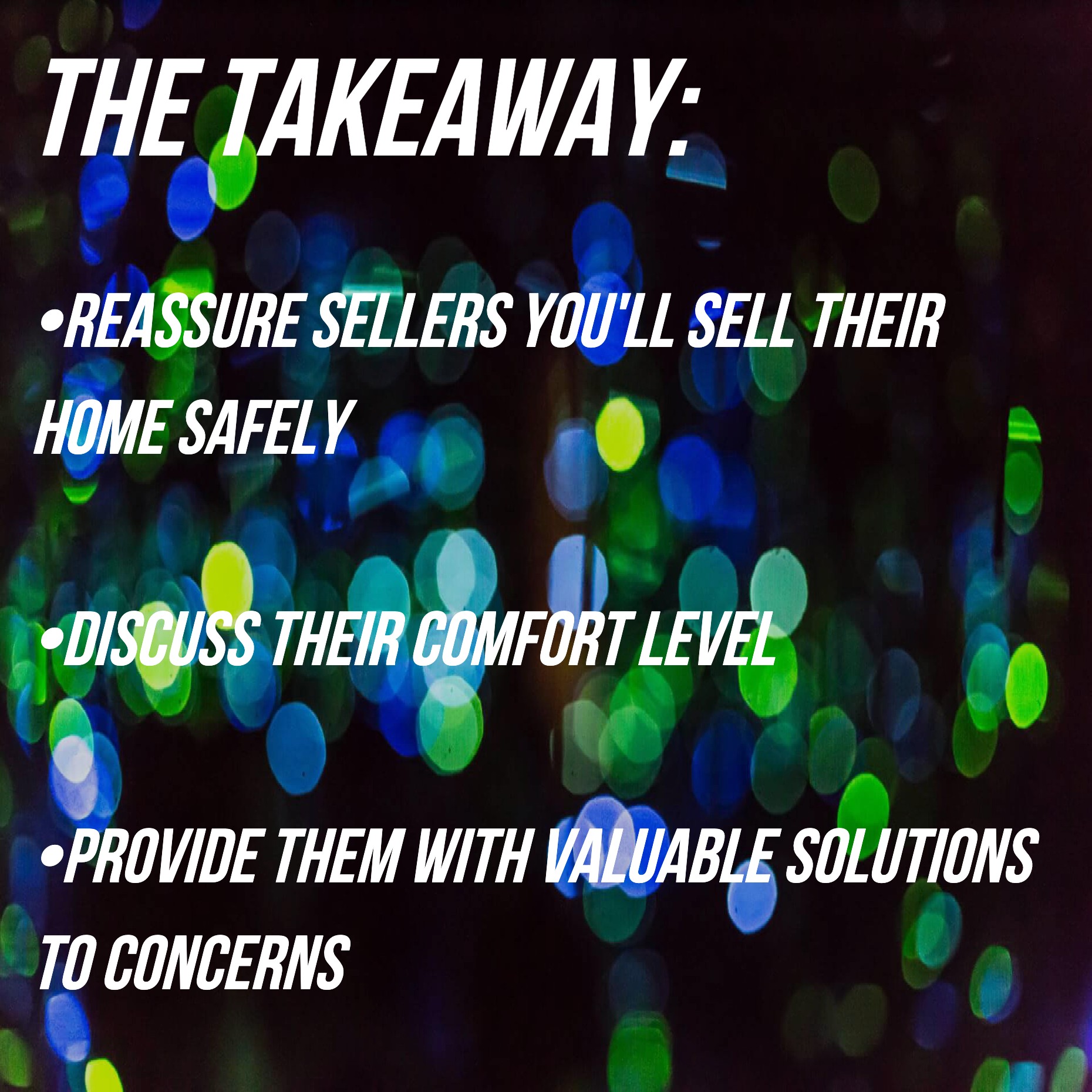
Additional resources:
- 7 realities your buyers and sellers should prepare for in 2021
- Brokers, arm your agents in the battle for buyers and sellers
- Drop some knowledge: 5 must-do’s for sellers in today’s market
Tech alternatives
The pandemic forced many agents to become at least acquainted with, if not downright savvy, at holding virtual home tours or providing 3D walkthroughs for buyers. Even as people become more comfortable doing in-person activities, virtual tour solutions continue to be a great way to access homebuyers and draw them into a property.
Many brokerages also partner with virtual tour providers like BoxBrownie, Matterport or RICOH Tours, and have training resources for agents with tips for how to make a virtual tour shine.
Property showing apps like ShowingTime and up-and-coming Instashowing also make virtual showing solutions simple for agents.
If nothing else, it’s pretty easy for an agent to just use their smartphone to stream a walkthrough of a property using options like Facebook Live or Periscope. Video tours aren’t at risk of going out of style anytime soon, and the convenience factor they provide buyers make it worthwhile to provide them for any listing.
Even a brief window of time for a virtual showing can be worth it. “I FaceTime with clients, and we also have an app through our showing program called ShowingTime and that allows us to do a virtual showing as well,” Connaker told Inman. “I’ve done some virtual showings, I’ve done virtual open houses, where I have it open for like a 30-minute period where people can kind of tune in.”
Virtual staging solutions have also become more robust over the last year. For a vacant home, virtual staging can really help make a property pop out to buyers. And it’s often more cost-effective than other staging options. Padstyler, VHT Studios and BoxBrownie are just a few solutions recently recommended on Inman by Megan Eskey, founder and CEO of real estate digital marketing company Reloquence.
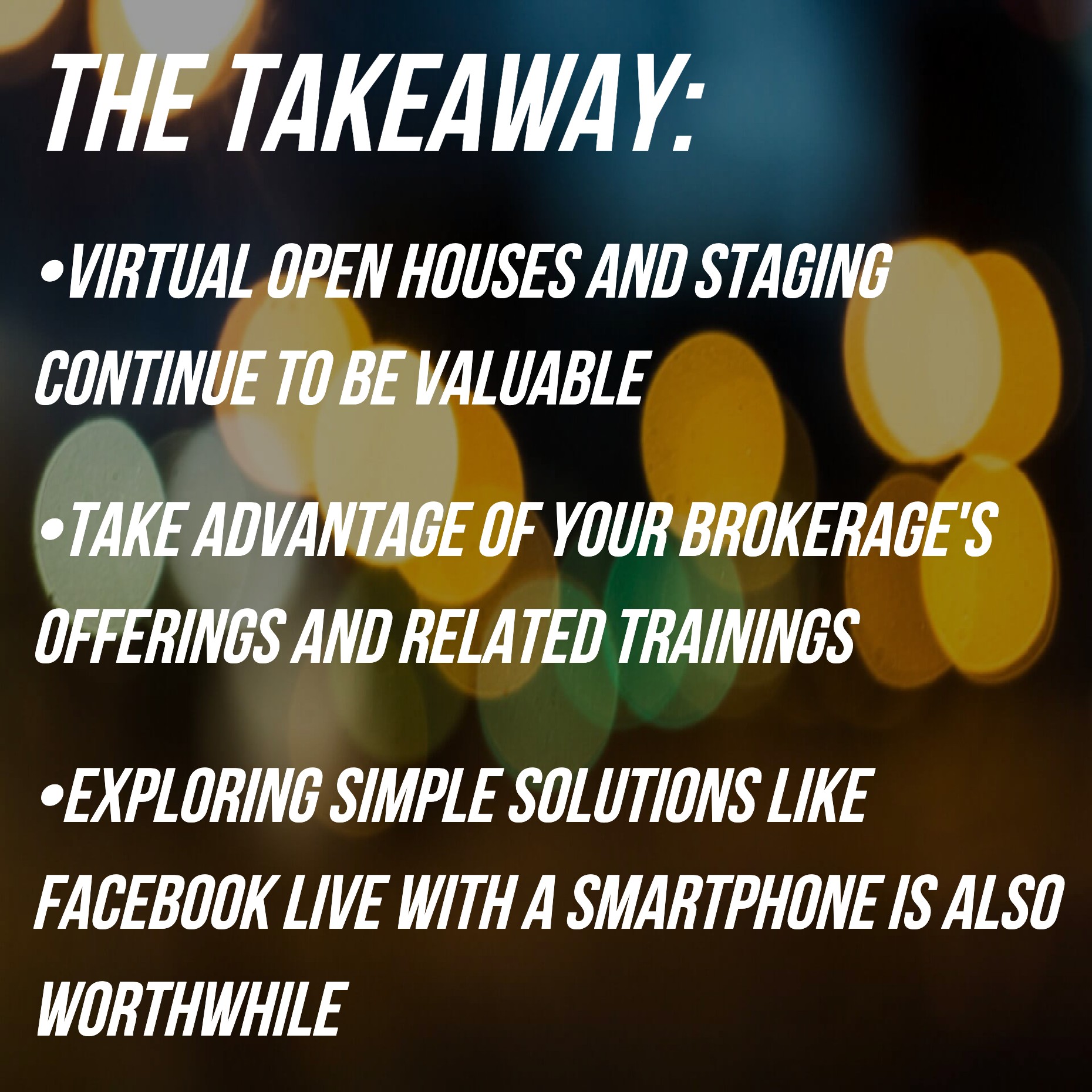
Additional resources:
- Need a virtual tour solution now? Here are our top picks
- 7 virtual staging services to increase your listing’s appeal
- Doing virtual tours? 10 things you should (and shouldn’t) do
- Inman Handbook on creating online home tours
Ask yourself: Is an open house worth it?

John Farrell | Exit Realty Homeward Bound
Agents that Inman spoke with for this story were split as far as whether or not they were opting to hold open houses during this time. For many, the combined safety factors surrounding the pandemic, as well as the rapid-fire pace of the market, made open houses pretty unnecessary right now.
“Between the COVID issue [and the fact that] our market is so hot, anybody interested comes roaring in the first day it comes on the market,” John Farrell, associate broker at Exit Realty Homeward Bound near Binghamton, New York, told Inman.
In Detroit, Ta’Nia Thomas, broker and team leader of Trinity Realty at Keller Williams, said that just by pre-marketing her “Coming Soon” status listings, properties were flying off the market.

Ta’Nia Thomas | Keller Williams Realty
“The market is so hot right now we just do a lot of pre-marketing so that we don’t have to do open houses,” Thomas said. “Instead of having multiple people in at one time, we just elected to stop doing open houses during the pandemic.”
Soto said that if he doesn’t do open houses on the first or second day of the listing, “there’s not really a need to do it” because homes are getting offers so quickly in Austin.
Farrell, who has been in the industry for nearly 40 years, said that prior to the current hot market, he hosted open houses regularly, even though he was very much aware that data has shown that open houses alone don’t often result in a sale.
A report released in 2019 by NAR showed that just 4 percent of homebuyers visited open houses as their first step in the homebuying process. Furthermore, only 14 percent of buyers frequently used open houses as a source of information.
“It’s typically been for the agent’s benefit more than the seller’s benefit,” Farrell said. “Two years ago, we as a company, we would do like 25 open houses a Sunday because it gives the agents something to do. But nowadays, between the video tours and the intensity of the market, what’s the point?”
Hahne also said she felt that open houses benefit agents in many ways, aside from just marketing a property for one particular client.
“I do think they’re very beneficial for a lot of reasons — being out and about and talking to people, and staying up to date on the things they’re interested in. Because things change as the world changes, and different neighborhoods have different clientele and they want to know different things. I just think it’s smart to get out there and be in front of people, be in front of buyers.”
“But I would say, particularly right now with inventory being so low, sometimes open houses are the only opportunities that buyers have to come see the home because all the showing times are booked,” she added.

Additional resources:


